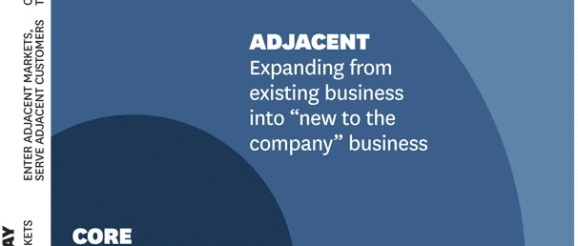The 5 pillars for managing product innovation – UX Collective

The five pillars of the innovation ecosystem

An innovation ecosystem is very similar to a biological one — the employees, customers, company processes, and strategies are all part of the complex set of interactive relationships among the resources within the marketplace, create a living, breathing ecosystem in which one tries to innovate. It is core to an innovation strategy that product leaders fully grasp and understand the portfolio of products a company offers and their ecosystems.
Pillar 1 : The innovation ambition matrix — the product mix

The ‘Innovation Ambition Matrix’, developed by former Deloitte partners, Bansi Nagji and Geoff Tuff, is a map that helps companies measure the novelty of their offerings in the market. This matrix segments three types of product offering:

Using the ‘Innovation Ambition Matrix’, product leaders can identify, map, and position their company offerings, up or down on the y-axis based on the target customer or market, and go left or right on the x-axis based on the use of the products and assets. Companies that outperform their peers have a mix of 70% core, 20% adjacent, and 10% transformational offerings. Keeping tabs of your company’s matrix will help you manage total innovation across a portfolio of products.

To create and drive innovation we need innovation-focused people to come together. For this to happen:
Once identified, start a conversation, ask questions about how they see the organization changing, get their perspective on the current innovation processes and see whether they’re willing to continue the conversation and become part of your innovation network. This process will take time and evolve, but creating a network within the organization’s structure is one of the most important steps toward creating a support system to navigate a product or service innovation ecosystem.

When innovators have a self-regulating, evidence-based “innovation pipeline, they have the map to curate “and prioritize problems, ideas, and technologies — Steve Blank
Innovation does not hinge on a singular spark of genius but rather is built on a solid foundation of implementable processes. An innovation journey starts with identifying the right innovation processes that fit within the unique context of the company. The most common and leading innovation processes include:
While innovation processes go by different names, they have a lot in common. Where they differ is the emphasis the process puts on certain phases. For example, design thinking focuses on understanding customer needs, rapid prototyping on solution experimentation, and open innovation on the interchange of ideas from anyone and everywhere. Irrespective of which process used, product and service innovators need to consider the following two points:
Utilizing the right innovation processes and identifying the phases will better equip the company to navigate the complexities of fostering innovation.

Before starting to innovate we need to understand the company’s business objectives and its ability to meet those objectives. There are three major places to look for insights:


Who should own innovation at the company? Where should the responsibility for innovation lie? Generally, there are four more common internal structures for innovation:
The organizational models that support innovation are unique for each company with varying levels of formality and complexity. If your company lacks one, then it is an opportunity for you to begin looking for a solution that could be implemented. Organizational structure for innovation is a prerequisite for creating innovative products.
